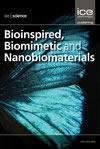Nanostructured proteins for delivering drugs to diseased tissues
IF 0.6
4区 工程技术
Q4 ENGINEERING, BIOMEDICAL
引用次数: 0
Abstract
During the last few years, nanostructures based on proteins have been playing a vital role in revolutionizing the nanomedicine era. Since protein nanoparticles are smaller and have a greater surface area, they retain a better capacity to interact with other molecules, resulting in carrying payloads efficiently to the diseased tissues. Besides having attractive biocompatibility and biodegradability, protein nanoparticles can also be modified on their surfaces. For the fabrication of these nanostructures, there are several processes involved, including emulsification, desolvation, a combination of complex coacervation, and electrospray. This can be achieved by using different proteins such as albumin, gelatin, elastin, gliadin, collagen, legumin, and zein, as well as a combination of these proteins. It is possible to functionalize protein nanoparticles by altering their internal and external interfaces so that they can encapsulate drugs, release them in a controlled manner, disassemble them systematically, and target tumors. This review highlights the physicochemical properties and engineering of several proteins to nano-dimensions used to deliver drugs to diseased tissues.用于向病变组织输送药物的纳米结构蛋白质
在过去的几年里,基于蛋白质的纳米结构在纳米医学时代的革命中发挥了至关重要的作用。由于蛋白质纳米颗粒更小,具有更大的表面积,它们保留了更好的与其他分子相互作用的能力,从而有效地将有效载荷携带到患病组织。蛋白质纳米粒子除了具有良好的生物相容性和生物降解性外,还可以在其表面进行改性。对于这些纳米结构的制造,涉及几个过程,包括乳化、去溶剂化、复合凝聚和电喷雾的组合。这可以通过使用不同的蛋白质来实现,例如白蛋白、明胶、弹性蛋白、醇溶蛋白、胶原、legumin和玉米醇溶蛋白,以及这些蛋白质的组合。通过改变蛋白质纳米颗粒的内部和外部界面,使其能够封装药物,以可控的方式释放药物,系统地分解药物,并靶向肿瘤,从而使其功能化是可能的。这篇综述重点介绍了几种用于将药物输送到病变组织的纳米蛋白质的物理化学性质和工程。
本文章由计算机程序翻译,如有差异,请以英文原文为准。
求助全文
约1分钟内获得全文
求助全文
来源期刊

Bioinspired Biomimetic and Nanobiomaterials
ENGINEERING, BIOMEDICAL-MATERIALS SCIENCE, BIOMATERIALS
CiteScore
2.20
自引率
0.00%
发文量
12
期刊介绍:
Bioinspired, biomimetic and nanobiomaterials are emerging as the most promising area of research within the area of biological materials science and engineering. The technological significance of this area is immense for applications as diverse as tissue engineering and drug delivery biosystems to biomimicked sensors and optical devices.
Bioinspired, Biomimetic and Nanobiomaterials provides a unique scholarly forum for discussion and reporting of structure sensitive functional properties of nature inspired materials.
 求助内容:
求助内容: 应助结果提醒方式:
应助结果提醒方式:


